|

| |
|
|
| |
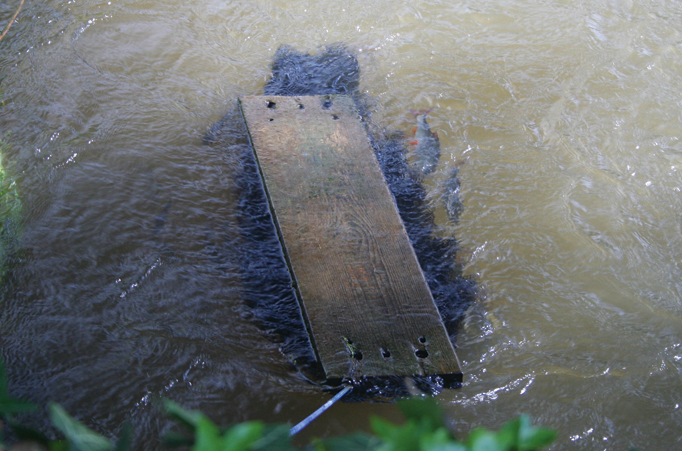 |
|
| |
It may be that a sense of déjà vu is generated with each yearly cycle reported on this site, but we see this as a positive, as it means that each year the roach spawn on our boards, we collect the eggs, we raise them at Project HQ for a year, we move the one year olds out to the stews for a couple of years, we then return them to the river, we beg steal and borrow, raising the vital funding for the project through our fabulous annual fundraiser doo, drug dealing, prostitution and burglary; we whinge and complain about how hard it all is along with anything else we can think of, but despite all this, the net result for each years’ efforts is that the Avon gets another dollop of our roach. So, on with the story...
As it was for the third time in five years the roach gathered at the spawning boards on the afternoon of the 24th April. An excited and relieved Trevor got on the phone to everyone to relay the good news. Then the biggest rains in more than two years came that evening, bringing the river up to within an inch of going over. It turned to chocolate and picked up and carried years of silt and muck, debris and detritus and thundered its way down the valley. The roach disappeared. The river dropped after just over a week, then just as we began to breathe again and uncross our fingers the same happened again. It wasn’t until the 8th May that the roach regrouped and began to spawn properly, despite some colour still in the river.
This year was a bit of an acid test for one of our spawning locations in so far as being able to see an increase in numbers following the release of some of our own roach into the area as part of our aim at bolstering the populations we borrow the eggs from, and we were delighted to have it confirmed that we had as we saw a far greater number visiting our spawning boards than in any previous year, with a large increase in the 3+ year class which were in all probability our own fish.
|
|
| |
 |
|
| |
|
|
| |
 |
|
| |
Our little happy-snap camera with the underwater facility has enabled us to get pictures like this. We are hoping to eventually get one of a roach actually hatching, but for now, we think images like this are just about as good as it gets. Within a few days, all these where out and stuck to the underside of the spawning boards.
|
|
| |
 |
|
| |
|
|
| |
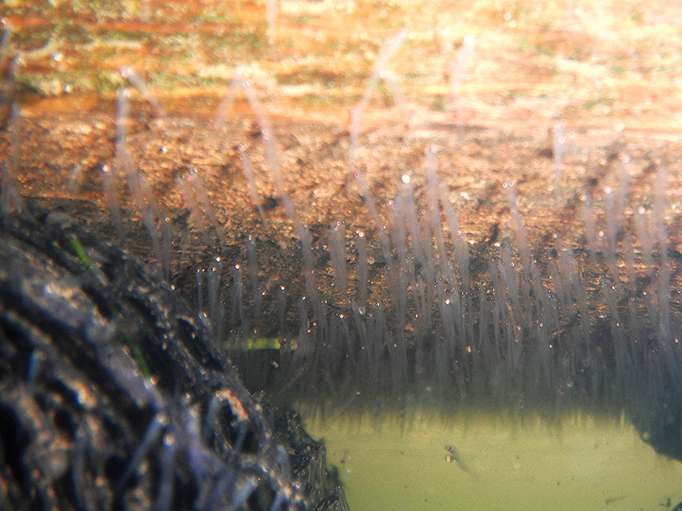 |
|
| |
As we have mentioned before, immediately after hatching, the roach attach themselves to the nearest inanimate object (usually the spawning substrate) with an adhesive gland on their heads, where they stay for a few days to take up most of their yolk sac. Here they have made use of the underside of the spawning board. At just a few hours old, they are at one of the most vulnerable stages of their lives – or would be without our protection - just tiny splinters of life.
|
|
| |
 |
|
| |
|
|
| |
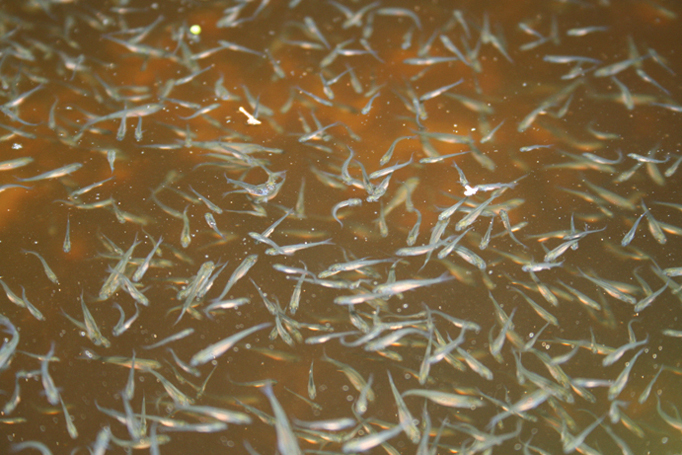 |
|
| |
The hard hitting and daunting reality of what we do here is never far away, and from the time the roach hatch in the tank, we know we have until the temperature drops in late October or, if we are lucky, November to get these little fish to a healthy size to give them a chance of surviving the winter, and beyond. This is all taken in careful stages, from the starter feed of brine shrimps on through the varying sizes of the special nutritionally balanced crumb. Roach are a very adaptable species, when given the chance, but this doesn’t stop us both worrying like first time parents at every stage. Fortunately, with the worry comes the reward, and the picture here shows the roach at a few weeks of age with bellies bulging pink with the first stage of the crumb feed, which is no more than a powder. We also lace the tanks with as many daphnia as we can harvest in our other bins and tanks as these squirt out their own live young which are the perfect mouthful for our tiny roach. Eventually, the adults are also taken as our roach grow big enough to handle them.
|
|
| |
 |
|
| |
|
|
| |
 |
|
| |
This image gives a perspective of just how successful this year has been. We have never known a year like it. We now have more roach in our tanks than at any time since the projects conception. We put this down to the soggy, cool summer, coupled with a relatively mild winter leading up to spawning. This would mean the parent fish are in good condition, meaning healthy eggs laden with yolk. With the spring rains putting the roach off spawning for a couple of week, this could also have helped with egg development. Then we had the regular rains oxygenating the water in the tanks every day or two, plus the added bonus this brings of regular water exchange. The river, however, would have been a far less hospitable environment under these conditions, with it up and over the banks, in the fields and the high streets.
|
|
| |
 |
|
| |
|
|
| |
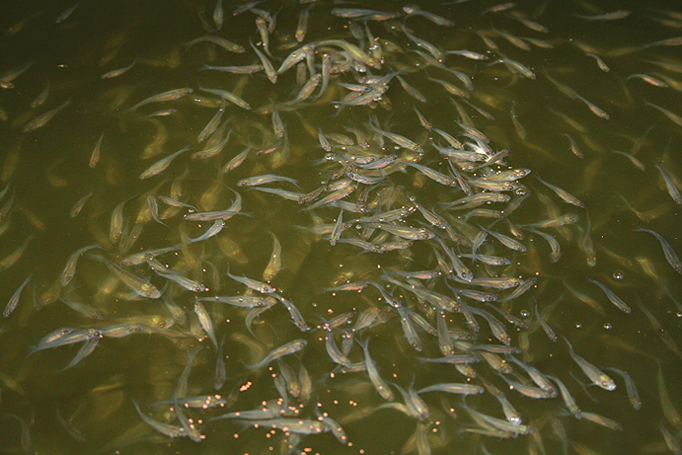 |
|
| |
While we make sure the little roach never miss a feed, this never becomes a chore, and shown here at three months of age they return this consideration with a display that will forever be impossible to take for granted. Every day we are treated to the water surface shattering with the feeding of thousands upon thousands of beautiful Avon roach.
|
|
| |
 |
|
| |
|
|
| |
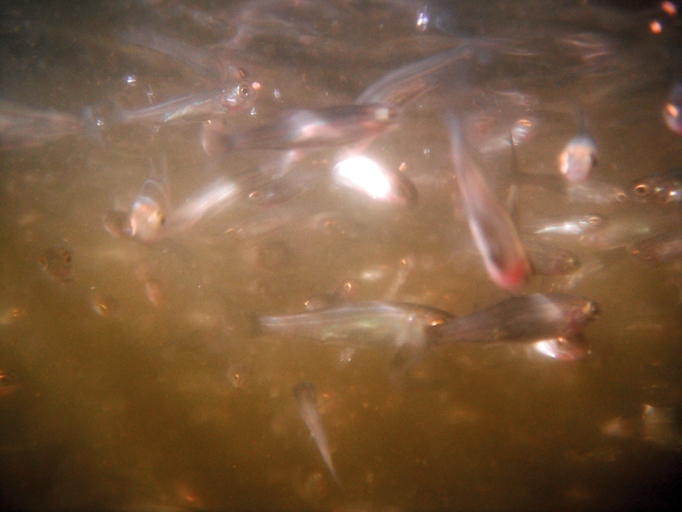 |
|
| |
We are never quite sure just how many pictures of our little roach, and from how many angles and ages you all want to see, so we assume it is the same for you as it is for us - as many as we can take. Here is an underwater shot of them at feeding time, accommodating in the usual way with a light show that lifts the heart. The picture isn’t the best quality, but we thought the composition worthy of inclusion – in other words, the best we could get.
|
|
| |
 |
|
| |
|
|
| |
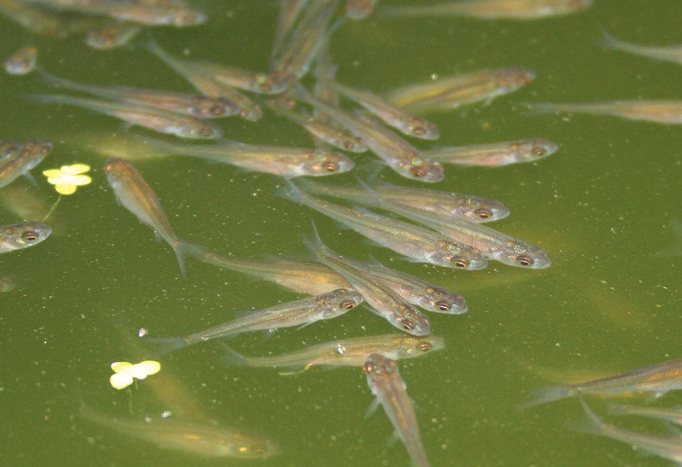 |
|
| |
The temptation is always to keep on chucking the grub at the roach all the while they seem to want more. However, over feeding is as dangerous as under feeding, so a deal of restraint has to be exercised. We measure each feed carefully before administering, and stick to a rigid feeding regime – that is unless we are working here at Project HQ in the daytime, when we’ll invariably sneak another light feed in the middle of the day or if we have visitors in which case the only way of revealing the roach is to tempt them with food.
|
|
| |
 |
|
| |
|
|
| |
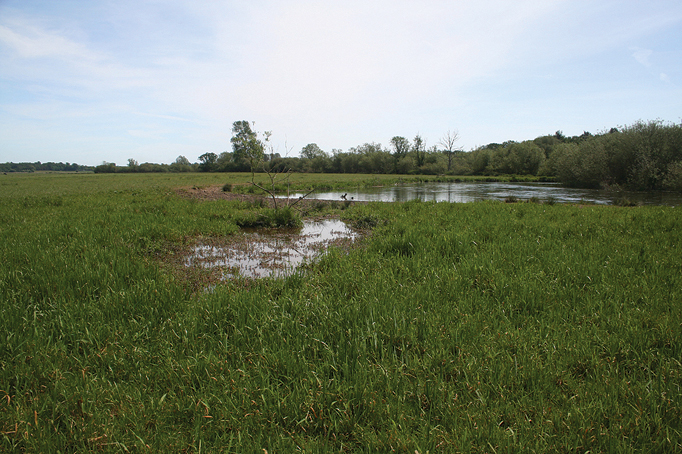 |
|
| |
As an accompaniment to growing and releasing the roach we are also now able to get involved in much needed habitat reinstatement and restoration initiatives along the Avon through the funds raised from donations and our annual fundraiser doo. These initiatives such as fry bay and stream excavations will benefit all fish species and not just our roach. The first fry bay excavation was due to have taken place this year, but we have been unable to get the machines into the fields, due to the floods and relentless rain and high water, so we’ll have to sit it out and wait. The picture here shows an area that is going to be excavated and joined to the river right back to where the picture was taken. This is to be done in partnership with the Barbel Society Research and Conservation department and the Environment Agency, who have come on board with us in partnership on these initiatives.
|
|
| |
 |
|
| |
|
|
| |
 |
|
| |
Unfortunately, for every Yang there is a Yin, and when the project started we tested the spawning boards in an Avon fed pool, pictured here that had a healthy population of roach. We spent money testing the roach for health and species authentication. We would then supplement the collection of roach spawn with some from here, and if the river was ever to fail us, we would use this as our safety net. This picture was taken in 2007. Protected by a shroud of trees and a sensitive fishery management regime, this was a little roach oasis.
|
|
| |
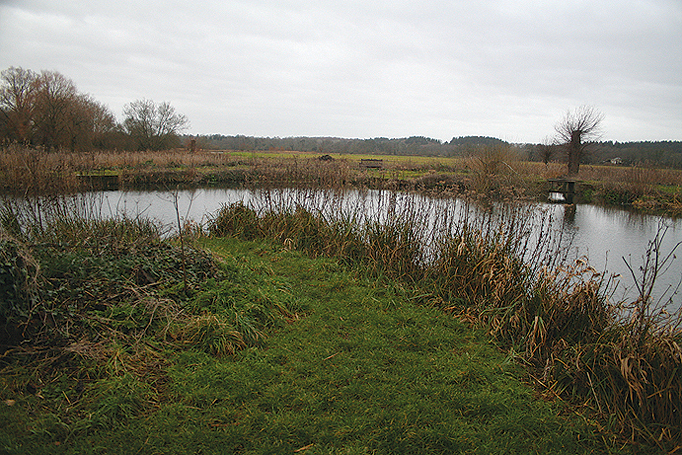 |
|
| |
This picture was taken in 2010 from exactly the same spot. The only remaining feature is the commemorative bench. Goodness knows what the person in whose memory it is here for would make of this. Even the trees that can be seen through the gap which are on the banks of the adjacent river have been removed. Please don’t get us wrong. We are all in favour of habitat and ecological manipulation and massaging. After all, look at what we’re doing. But we feel that this all could have been done over a longer period and with much more consideration for the initial impact – and we are not alone in this.
This is to return the valley to a more open-aspect landscape in favour of ground nesting birds with, it would appear, little or no consideration for the roach, or indeed much else, let alone the woodpeckers, owls, bats and stag beetles. Before the tree and general undergrowth removal, and because of this protective shroud, inhibiting landing and takeoff, there was never a sighting of a cormorant on these pools. Now they visit regularly, up to half a dozen at a time. Since the removal of the cover, we have not collected a single roach egg from either of the pools.
It is broadly and mistakenly considered that cormorants won’t bother with tiny fish. However, Trevor and a couple of river keeper friends have established beyond doubt, through looking at the stomach contents of legally shot cormorants, that minnows are taken in good numbers. This would lead us to conclude that the roach become a target in the precious first year of their life.
|
|
| |
 |
|
| |
|
|
| |
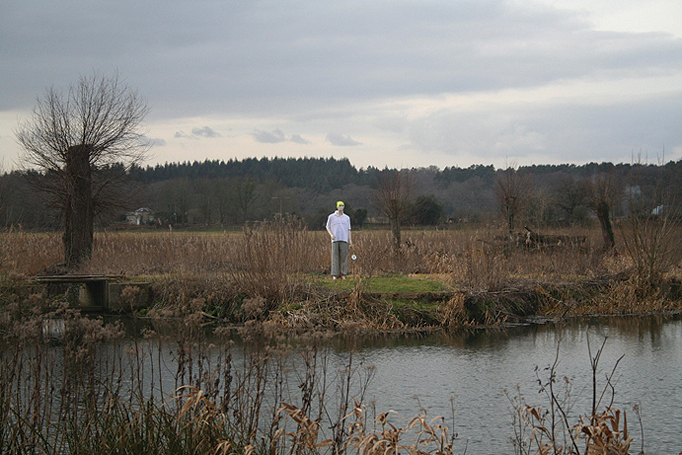 |
|
| |
So, being, as they have been a vital and dependable asset to our project, we decided to seed them with boards-full of spawn from our own adult roach, which hatched successfully into clouds of roach fry. We are confident that enough of these will survive to adulthood and reinstate these pools as the supplementary spawn collection locations they once were.
We have placed a number of mannequins around the pools that we refer to as Garry, Robbie and Howard. These will act as a cormorant deterrent which will go some way to protecting our valuable little roach, if we keep them on the move.
While the odds seem somewhat stacked against us in this area of the valley, we are determined to give it our best shot for a while, but are developing sites elsewhere to ensure the continuity of these vital alternatives.
|
|
| |
 |
|
| |
|
|
| |
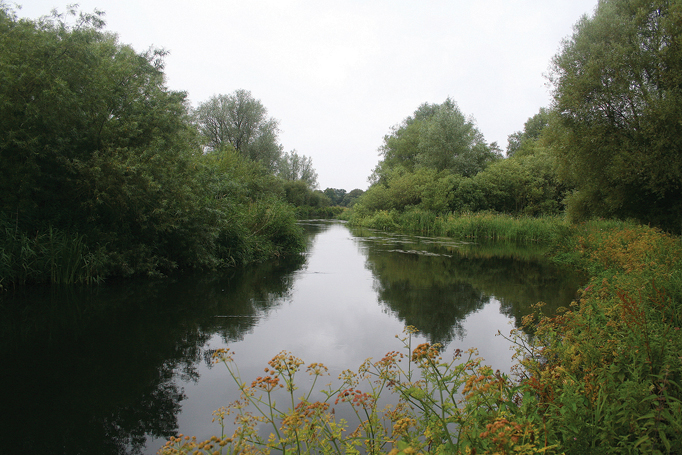 |
|
| |
|
|
| |
These two pictures have been taken from the same spot on the banks of the adjacent Avon, showing the more widespread effects of this rather brutal and questionable ecological initiative. Look dead centre of the pictures at the distant trees and you will see that the only thing that remains is the horizon. And while we could be accused of having a slightly blinkered outlook, our concerns are for the more widespread environmental impact of this ecological vandalism on all that flies, slithers, scampers, swims or crawls in this once breathtakingly stunning and diverse habitat.
There is, however, a glimmer of light at the end of the tunnel. The Environment Agency is undertaking a four year project which will include the planting of blocks of native broadleaf trees along the Hampshire Avon aimed at creating patches of shade and keeping the river cool.
This is primarily geared around cooling areas of river for the benefit of salmon and trout, but through its very existence will be beneficial to all manner of life, including not only our roach, but all that flies, slithers, scampers, swims or crawls, and will go some way to restoring and enhancing some areas of this once breathtakingly stunning and diverse habitat.
Not only are we delighted that this project is underway, but we are also encouraged that the Environment Agency and Natural England are in communication on this matter, and we are in communication with both of them too. And while it might appear that one is pulling them up as the other is planting them, this is not necessarily going to be the case.
|
|
| |
|
|
| |
 |
|
| |
|
|
| |
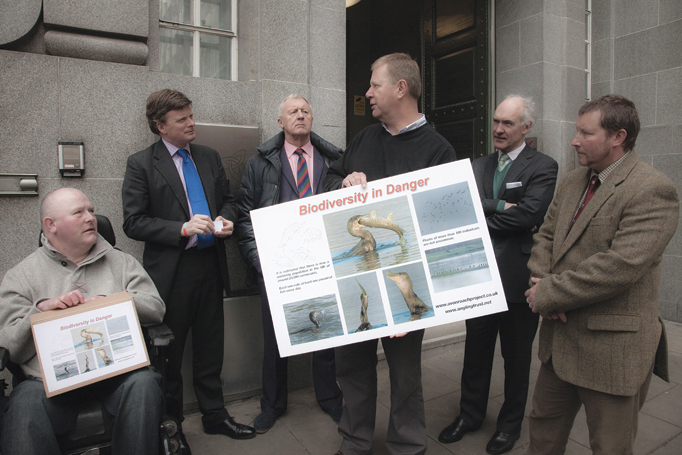 |
|
| |
As many of you will already know we started the call for the cormorant to be placed on the General Licence in the government’s review of the current woefully inadequate licensing regime. We organised and delivered a petition of some 17,000 signatures to Minister Richard Benyon who, by the way, is a bloody nice bloke. This picture shows Trevor putting the case for the change in the law which would allow the legal right to protect our desperately fragile and vulnerable fish populations in this country. For the full story click on ‘Cormorants’ on this site.
|
|
| |
 |
|
| |
|
|
| |
 |
|
| |
We were invited to give our PowerPoint presentation and an update on the project at the 2012 Barbel Society Conference in the Midlands. This was our second time presenting here and like the first we were blown away by the support. We strongly believe that one of the flaws in angling is the insularity of single species groups and believe that broadening communication and amalgamations in aspects such as habitat restoration and ecological management, and simply letting the right hand know what the left is doing can only be for the good. Often what’s good for the grayling is good for the chub and is good for the dace, the barbel and so on.
We hold our annual fundraising event and will be undertaking a number of habitat restoration initiatives on the Avon in partnership with them, along with the EA, and so it was nice to go along and cast into someone else’s pool. We are always made to feel very special at these conferences, and the question and answer session at the end of our presentations always demonstrates a real empathy in the room for what we are doing and a deep sense of understanding, appreciation and belief, for which we are extremely grateful and uplifted.
|
|
| |
 |
|
| |
|
|
| |
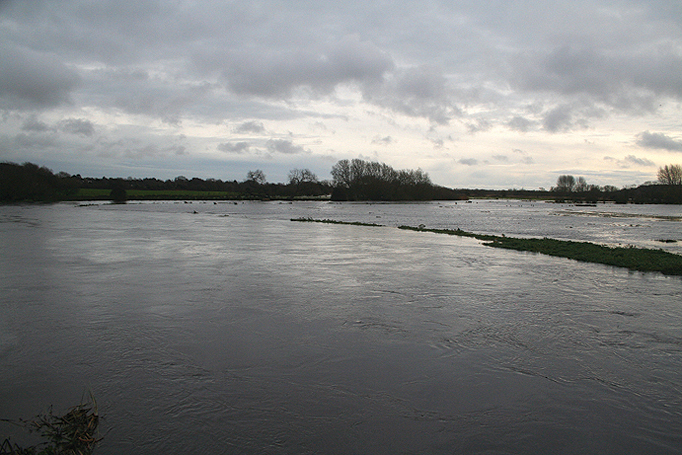 |
|
| |
We would love to be able to show a row of pictures here of us releasing the roach who have served their time in our stews and earned their freedom, which were due for release in late 2012. However, another positive and priceless facet of the Roach Project has been revealed as the country suffered the worst prolonged floods and the highest water levels in history. All the roach in our tanks and stews remained safe and unaffected, other than enjoying a regular drink of tinglingly fresh oxygenated water and cool summer temperatures along with more midges and mosquito eggs, larvae and pupa to gorge on than they could shake a fin at. We have simply postponed their release until the coming summer has passed and the water temperature drops again, which is more suitable for fish movement.
|
|
| |
 |
|
| |
|
|
| |
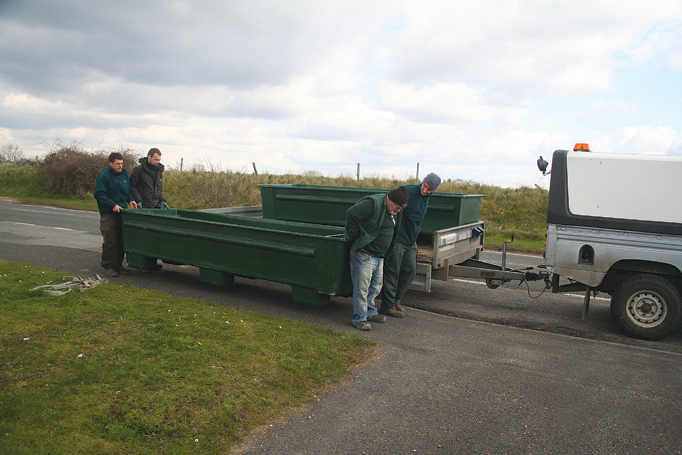 |
|
| |
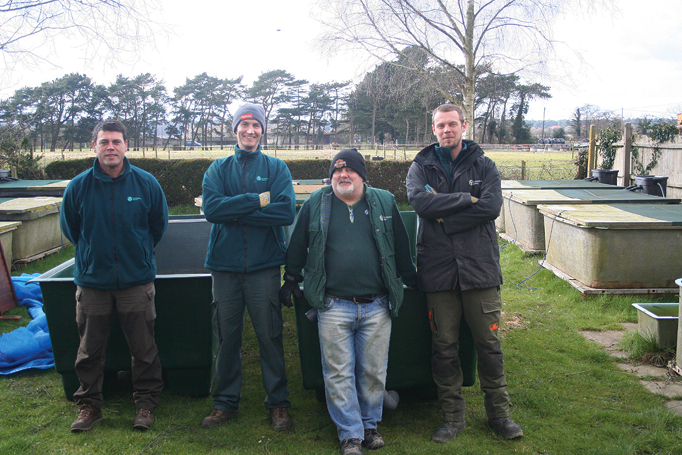 |
|
| |
Just when you, and we, thought Project HQ had reached saturation point, the big old apple tree that Trevor had been denying for years was on its last legs, affectionately known as ‘Derek’, finally ended up as log burner fodder. It was rotten through, and helped on its way by the local woodpeckers that battered the daylights out of it on a regular basis.
Before the sawdust had settled both Hugh Miles and Budgie quipped ‘Aaah, room for more tanks then.’ Then, coincidentally, a few weeks later we received an email from our friends at the EA telling us that they will be moving out of one of their depots close to Project HQ and there was more equipment for us if we wanted it.
We went along with the EA guys to look at what was available and have settled on two 12’ x 4’ tanks, which will replace the space Derek took up, plus one square tank to replace one of our old ones.
These additional tanks will allow us to spread the spawn across more water and in one of the twelve footers we hope to grow some brood stock and even tag and release adults from here.
That really is saturation point.
Once again we take our hats off to the EA guys for their generosity and support. Not only did they think of us first for these tanks, but loaded them on a trailer, between jobs, and delivered them here to Project HQ in time for us to get them bedded in and filled ready for the coming year. From left to right in the picture are Jason Swinerd, Anthony Moyle, Dave "Midge" Merrick and Ross Michell. We tried to give them each a fiver for a drink, but they refused it and told us to donate it to the project. You can’t knock that, now can you? Thanks guys.
And, the generosity doesn’t stop there. One of the tanks was missing the vertical pipe that controls water level and is used to drain the tank, connected with a series of screw threaded joints to the pipe under the tank and the drainage hole. We probably snagged this on a previous visit and used it on one of the early tanks. So we contacted Purewell Fish Farming Equipment, whose name is on the side of most of the tanks, in an attempt at acquiring another. We spoke to a very kind and helpful Malcolm Windsor, who promised to either post or personally deliver what we needed, and would accept no payment. A few days later, there it was at Project HQ. Thanks Malcolm.
|
|
| |
 |
|
| |
|
|
| |
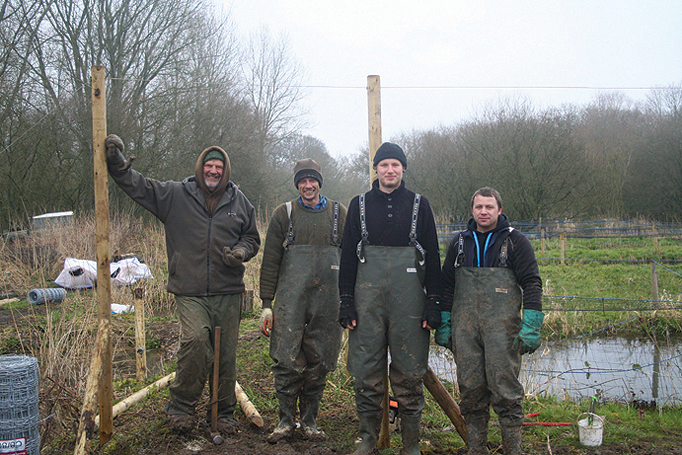
|
|
| |
As this project thunders on, we are always on the lookout for new opportunities and solutions to problems, and this year we decided to use a little more of the funds raised at our annual doo, to excavate an additional two large stews alongside our existing ones at Bickton. This will further allow us to split our roach over a greater number of locations – eggs in one basket and all that.
Our good friend Mark Shelton did the ground work in extremely difficult conditions following almost an entire year of relentless rain, and in our late March arctic, bone chillingly, brutally cold temperatures, the stews were netted by more project supporters pictured here. From left to right, Pete Reading, Pete Cossburn, Chris Morrall and Martin Noideaski. Thanks guys.
|
|
| |
 |
|
| |
 |
|
| |
The final job. Holes in the ground were already there, but had been reclaimed by Mother Nature and dense undergrowth of brambles as thick as your wrist, nettles like broom handles and impenetrable scrub. All we needed was for it to be cleared and scraped and modified to suit our needs with inlet and outlet pipes for water level management.... And what a job?
|
|
| |
 |
|
| |
|
|
| |
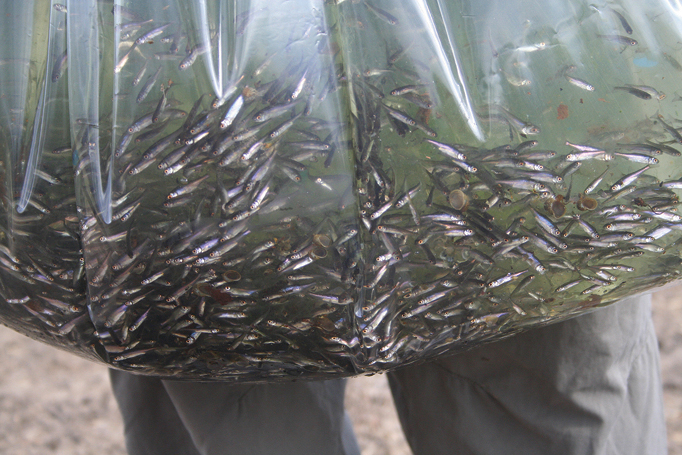 |
|
| |
|
|
| |
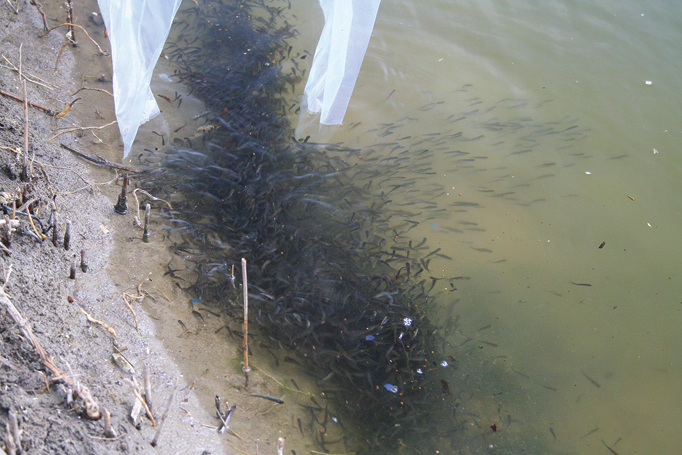
|
|
| |
The living contents of each of our tanks are decanted into large poly fish moving bags (one for each tank); ironically, with a livebait aerator supplying plenty of oxygen to ‘keep them fresh’ for the journey, then into bins for transportation. They all then get a very slow ride in the van to the stews where they are joyously introduced to their new home. The joy appears not only to be ours, but theirs as well, as you can see from the picture on the right, which shows them leaving the ‘roach spill’ and bombing off to explore their new ‘ocean’.
|
|
| |
 |
|
| |
Every period of time, long or short, is part of or completes another cycle in the project; and with there being no buffer zone in nature; simply, what happens will always happen regardless of whether you are ready and prepared for it or not. So our time, especially between mid February and middle of summer, is governed by these cycles and making sure we are ready for each of them. From the placing of our spawning boards in the river in plenty of time to accommodate whatever conditions - early, late, soggy, cold - spring decides to take on, the twice-weekly cleaning of every spawning board, the specific day when the combined water temperature and day length triggers the commencement of spawning in the river, a few days between replacing the visited boards with fresh new ones for the roach to continue spawning on, a week and a bit for the roach to finish spawning and for us to make sure we collect the right amount of spawn and leave the right amount to hatch naturally in the river, ten or twelve days to get the hatch completed, a month of getting the roach over the most critical part of their new lives and bulging with brine shrimps twice a day, to the full year in the tanks where hopefully we will have managed to raise thousands and thousands of healthy little Avon roach ready for transportation to our stews where they will then complete the full three year cycle, reach adulthood and be released back into the river where they can commence their own annual cycle of reproducing and naturally increasing the numbers of roach in the river. It is a whole parallel world that struggles right under our noses that requires a lot of hard, but extremely rewarding work along with a deal of self belief and support from many folk; in fact almost everyone we meet, shed-loads of careful attentive husbandry coupled with some whacko ideas and concepts and a penchant for just getting off our asses and having a go that allows us turn this plank and netting into the spawning boards that sets each cycle going.
It is interesting to note the different stages the fish go through. Though recognisable as true roach at less than a year old, they only form the redness in the fins as they approach sexual maturity at three years of age. It has been suggested that the red fins are used in communication, which we think makes sense. After all, they must be there for a reason, and under water footage has shown them being twitched and flared and flicked in the presence of other adult roach.
So, what a year it’s been..... Soggiest summer, wettest wet, highest rivers ever, coldest cold.... Mother Nature really can be a ‘BITCH’ but then she only has to turn out a few brimstone butterflies, swallows, cuckoos and bumble bees and we all fall in love with her all over again.
We don’t anticipate the coming year to be as successful as the last, due partly to the very poor winter and extremely cold lead-up to spawning, meaning that the roach spawning this spring will not be in anywhere near as good condition as they might have been following a much milder and more friendly winter last year. This, we believe, could reflect in the strength and vitality of the eggs laid; then the hatch, survival and growth. We’ll do our best though...... Interesting stuff eh?
As we sign off now, the roach have started to spawn on our boards in the river. And amazingly, they started on the 25th April, just as they have done for three of the last five years.
There is already a whole bucket-load of stuff to tell you all, but we’ll leave it there for now and get on with starting the next annual cycle in the Avon Roach Project........ Tanks to sort out, brine shrimp hatchery to get up and running, spawning boards to collect and replace, filters, aerators, cakes, pies....
|
|
| |
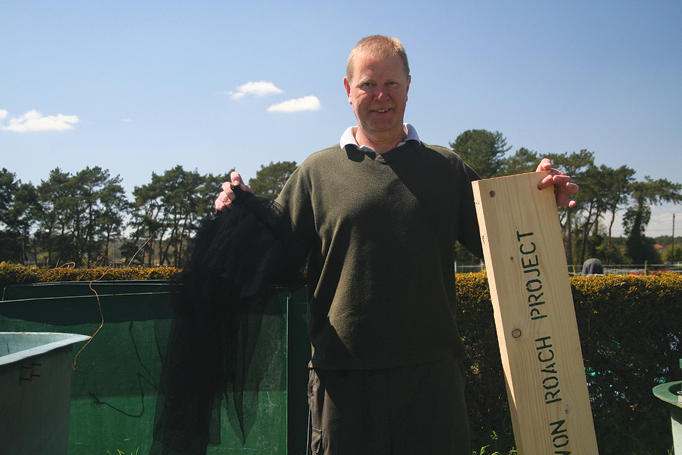
The plank is on the right. The plank in the middle is Trevor.
We get an indescribable feeling of wellbeing at turning this......
|
|
| |
 |
|
| |
into this.......
|
|
| |
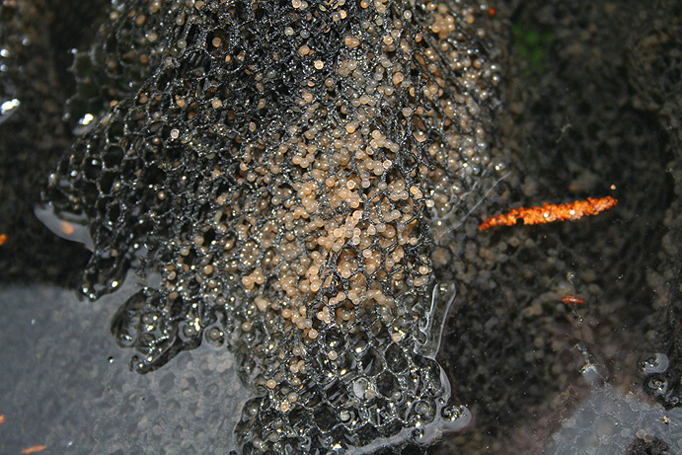 |
|
| |
into this.......
|
|
| |
 |
|
| |
into this.......
|
|
| |
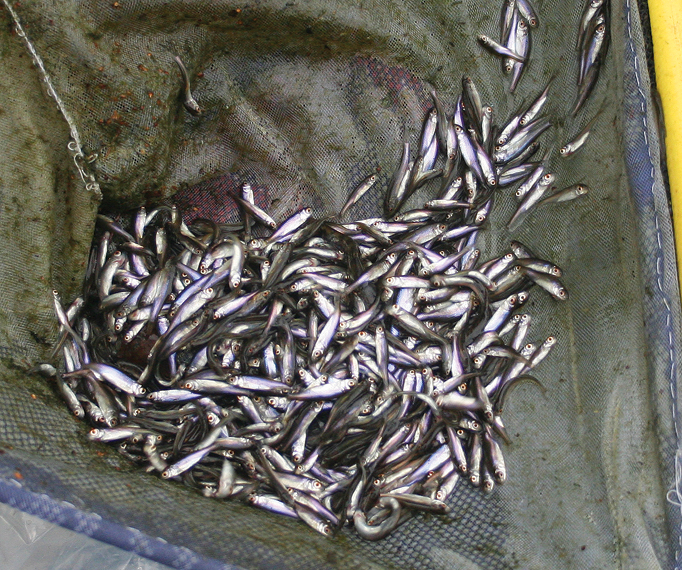 |
|
| |
into this.......
|
|
| |
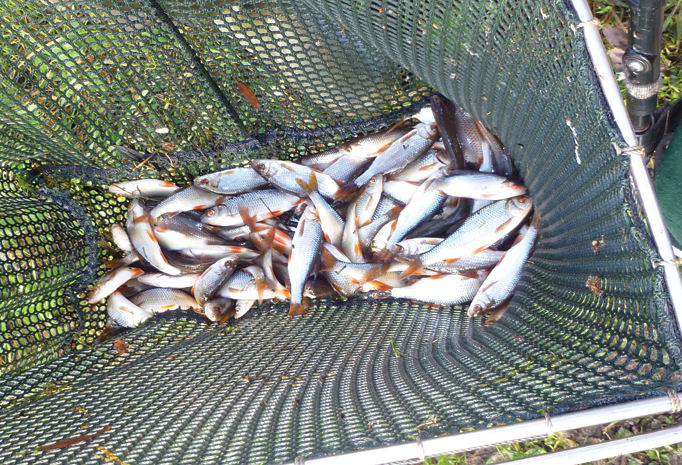 |
|
| |
Into these.........Perfect, beautiful, sparkling, priceless adult Avon Roach.
|
|
| |
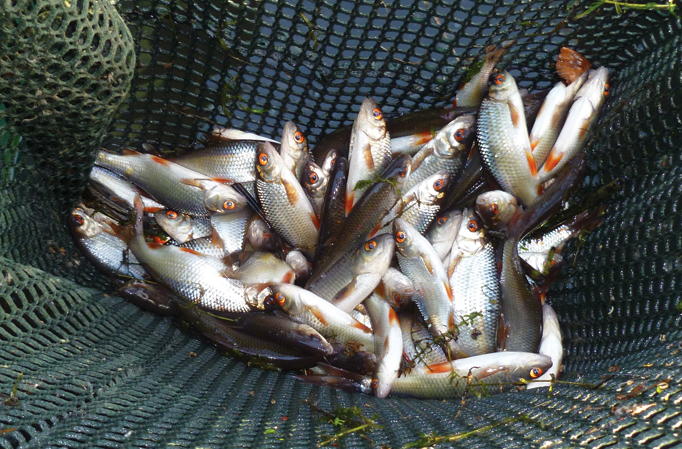 |
|
| |
|
|
| |
 |
|
| |
|
|
| |
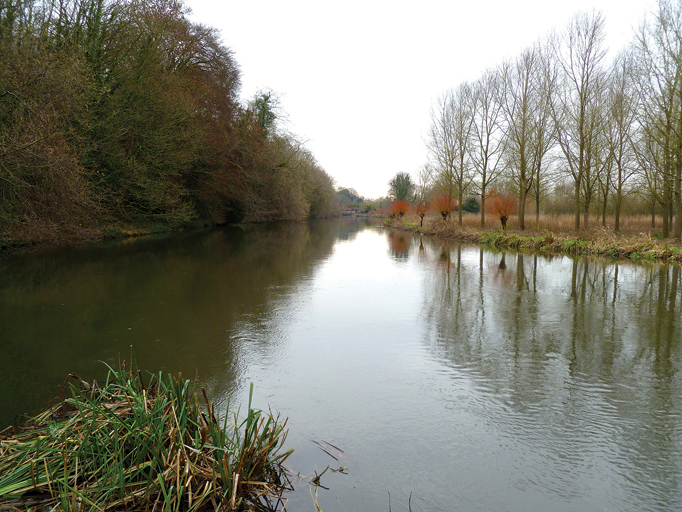 |
|
| |
The Hampshire Avon, a river that has enriched the lives of so many down the generations. Let’s hope it’s not too late for it to do so for future generations.
In just a few decades roach fishing, and indeed angling in general, has changed beyond all recognition. From the heady days of being able to stand in rivers full of lush ranunculus and golden gravels alongside shoals of fish of all sizes – some tiny and some legendary, to the modern day, which anyone of a certain age will tell you is a pitiful shadow of its former self.
The sparkle and vibrancy of the rivers had to be seen to be believed, but a question of sustainability has to be asked if left on this evolutionary path.
We are, after all, the custodians or sitting tenants of this environment, and surely we have an obligation to look after it and leave it for the next generation in as good, if not better, ecological shape than we inherited it.
|
|
| |
 |
|
| |
|
|
| |
 |
|
| |
|
|
| |
|
|
| |
| |
|
|
| |
|
|
|
| |
|
|

